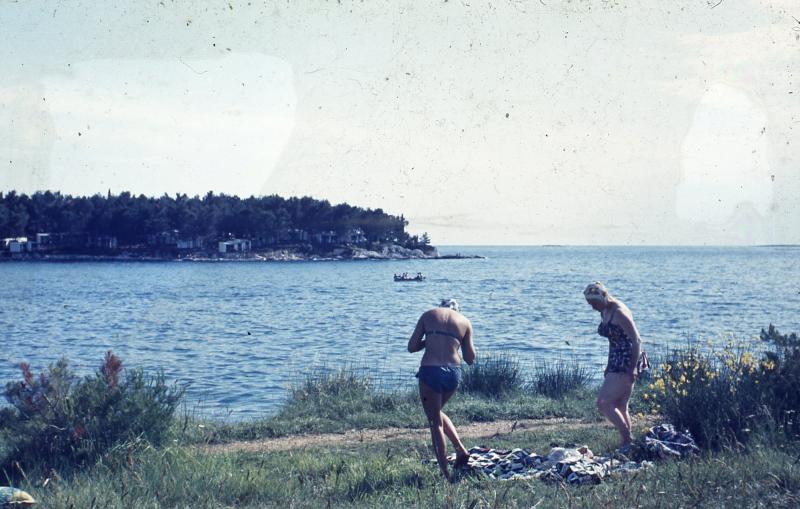Development of the bathing suit
Along with the development of bathing tourism, the history of "official" bathing clothes in public areas - bathing suits - begins. Although short in history, the evolution of this garment, which went in the direction of using less and less material, or gradual undressing of the body, will reflect all the social and cultural changes that swept the world during the 19th and especially during the turbulent 20th century.
Changes in the understanding of bathing and bathing fashion are shown through numerous postcards and photographs from Poreč bathing areas, which testify to how life on our beaches has changed and developed. But the most interesting are certainly the original swimsuits - from women's cotton swimwear from the late 19th century, to the "scandalous" bikini, which took two decades to be accepted in civic circles and become the most popular women's swimsuit. The men's swimsuit has gone through a much faster and simpler development path.
Swimsuits on our beaches appeared with the first tourists. Given the conservatism of that time and the popularity of light tan, women bathed in layered clothing that completely covered the body. The first costumes were made of a few meters of wool or cotton material, mostly gray, black or dark blue, and due to their weight they practically made swimming impossible. On their heads, women wore wide-brimmed linen or straw hats to avoid a darkened tan that was considered a mark of the lower classes. By the early 20th century, women’s costumes had been somewhat simplified, by shortening sleeves and skirts, revealing slightly more body. The first men's swimsuits were one-piece pieces of short-sleeved clothing, which wrapped around the entire torso and ended at the knees, and they too would become increasingly scarce over time. A common feature of both men's and women's swimsuits were the navy style decorative borders.
As swimming became a recreation for women as well as men over time, a need arose for more practical clothing and that primarily required less fabric, but at the same time a preservation of chastity. In the first post-war years women's swimsuits on our beaches were similar to those from the beginning of the 20th century, but more and more sleeveless costumes with shorter legs started to be seen, especially among younger women. In the early 1920s, costumes were made of wool, silk or coarse cotton, in one or two pieces, with thin straps and skirts reaching halfway up the thighs (to younger women) or to the knees (in older women). Wide hats are going out of fashion and being replaced by bathing caps. Swimsuits are changing and becoming increasingly scarce to meet the need for sunbathing and tanning of the skin that is starting to be given on prescription as therapy.
Men's swimwear is also changing, so men wear costumes cut deep on the front and the back, or choose costumes in which the upper part is pulled over one shoulder. The upper parts become superfluous so by the end of this period men will start bathing only in swimming truks, fully revealing the torso. Thus, the evolution of the male costume was practically complete.
After bold one-piece costumes that revealed shoulders, backs, neckline and legs, in the 1930s the first two-piece swimsuits appeared. New materials are also emerging, stretchy, shiny and partially waterproof, much more practical for the ever-growing swimwear industry. In addition to ready-made swimsuits, the costumes were also sewn at home or tailor-made by tailors.
Post-war costumes were mostly one-piece costumes without straps or possibly thin straps that were tied around the neck when swimming, and two-piece costumes similar to those from the 1930s were also used. In the early 1960s, one-piece costumes, with a sporty look, with wide straps and extremely deep-cut backs, were still popular. The use of various synthetic materials (latex, nylon) is increasingly present, and the swimwear market will soon be conquered by a new material - lycra. At the same time, it's growing the popularity of the bikini, a two-piece swimsuit of minimal dimensions that revealed a waist with a belly button. Although it caused complete scandal and public outrage at its appearance in 1946, by the end of the 1960s it had completely taken over our beaches and become planetarily popular, retaining that statute to this day.
Copyright, Zavičajni muzej Poreštine - Museo del territorio parentino
Add to favorites




